Which Plants to Save
It dates back to when I was a teenager: the night of the first killing freeze was one of my least favorite nights of the year. It meant that the plants I’d been nurturing since spring were suddenly going to be lost.
The angst is lessened if we have a home hobby greenhouse or a bright sunroom with ample space for most of our treasures. But, assuming those may not be available, let’s outline some things you’ll want to consider in making your difficult choices.
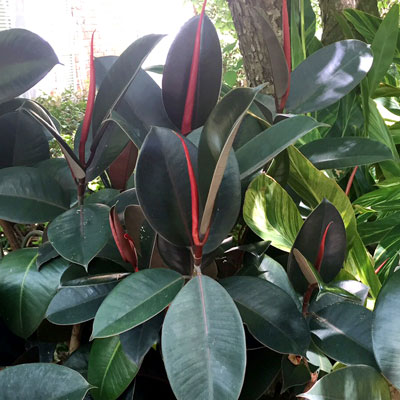
Photo: Rubber plants are huge plants in nature. They eventually outgrow our space for them indoors and have to be pruned.
Start by evaluating the space that you have. Most plants will need a skylight, large south, east or west window or a greenhouse or cold frame. We’ve all tried over-wintering plants in the garage, and most of us have horror stories to tell. Almost all garages are far too dark and way too cold for successful plant maintenance. And, there’s only so much room in your sunroom or den. If you crowd plants too closely together, you’ll end up ruining all of them. Know your limitations, then save accordingly.
Consider which plants are expensive or difficult to replace come spring. There’s no point, for example, in trying to save annual plants like wax begonias, coleus or impatiens when nurserymen will have ample supplies in March or April. Save your prime indoor real estate for other, more precious plants. Or, take cuttings (for types that are started from them), and over-winter the smaller new plants.
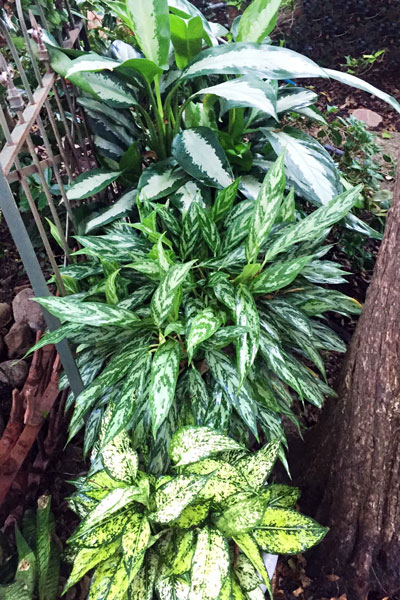
Photo: Aglaonemas in the Sperry landscape will be heading indoors within the next few days.
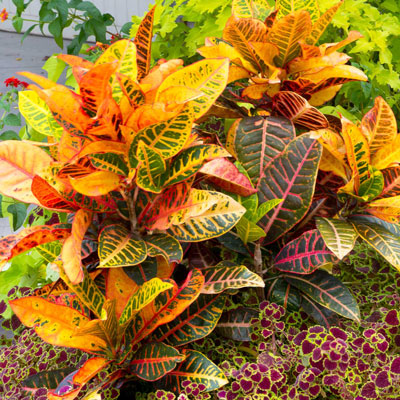
Photo: Croton has been growing in sunny spot over the summer – will require extremely bright light indoors.
Aglaonemas and dieffenbachias, like bougainvilleas, don’t do well with temperatures lower than 45 or 50 degrees, so move them inside first. Philodendrons, ferns, ficuses, scheffleras, palms, pony tails, rubber plants and crotons can all take somewhat cooler conditions, but you mustn’t let them be exposed to temperatures lower than 35 to 38 degrees, especially on still, clear nights when frost might form.
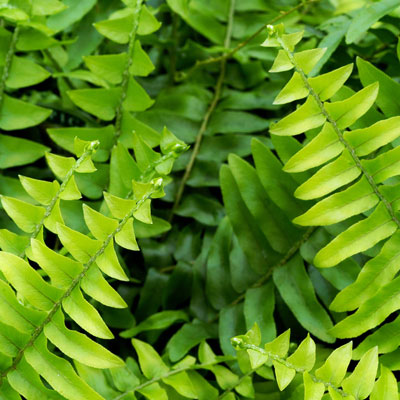
Photo: Boston fern and other tropical types will need brightest possible light indoors.
Bougainvilleas, tropical hibiscus and mandevillas will have to come inside if temperatures drop much below freezing for more than a few moments. Bougainvilleas have thorns, so you’ll probably want to trim and reshape them before you start hauling them around.
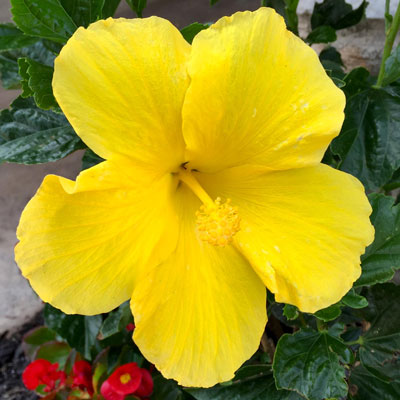
Photo: Hibiscus plants surive the winters outdoors in South Texas, but they’ll require sunny indoor settings farther north.
Hibiscus plants usually grow so large over the summer that you’ll need to trim them just to get them back into the house. Watch for white flies and their small egg masses on the backs of the hibiscus leaves. They’re tough to eliminate indoors, and they love hibiscus like a youngster loves candy. If you see them on your hibiscus plant, that might be a factor in whether you do try to bring the plant indoors. Mandevillas are prone to mealy bugs in protected inside environments. If you see any signs of them on the plants’ leaves or stems, you may opt to discard and replace them.
If you’ve put tropical foliage houseplants outside for the summer, you’ll need to ready them for the trip back indoors. Cut back on the fertilizer you give them immediately. In fact, once they’re inside, you may not want to feed them until spring’s brighter days. Trim them as needed to get them into the house. Major reshaping, however, is best done as you take them back outside for the spring and summer. At that point, you can also repot them into larger containers and fresh potting soil.
Plants such as crotons or hibiscus that you set directly into the ground this year will be difficult to save. By this time, they’ve established deep and firm roots, and it would be disruptive to dig them out of the garden and pot them up for over-wintering indoors. Still, if you’re willing to take the chance, dig them carefully and trim them back to compensate for the loss of roots
Some of your summer plants have a reasonable chance of coming back up from their roots in the spring. That’s certainly true of bananas (see related story this issue), so there’s no need to try to dig them and bring them inside. Depending on where you live in Texas, you may decide to do the same with lantanas, esperanza and firebush plants. They’re completely reliable perennials in South Texas, fairly dependable in Central Texas, and somewhat sketchy for North Texas. They’re also readily available in nurseries in spring.
This weekend would be a good time to take a stroll around your gardens to assess your decisions. You don’t have to move your plants just yet, but don’t wait until that night of the first killing freeze.
